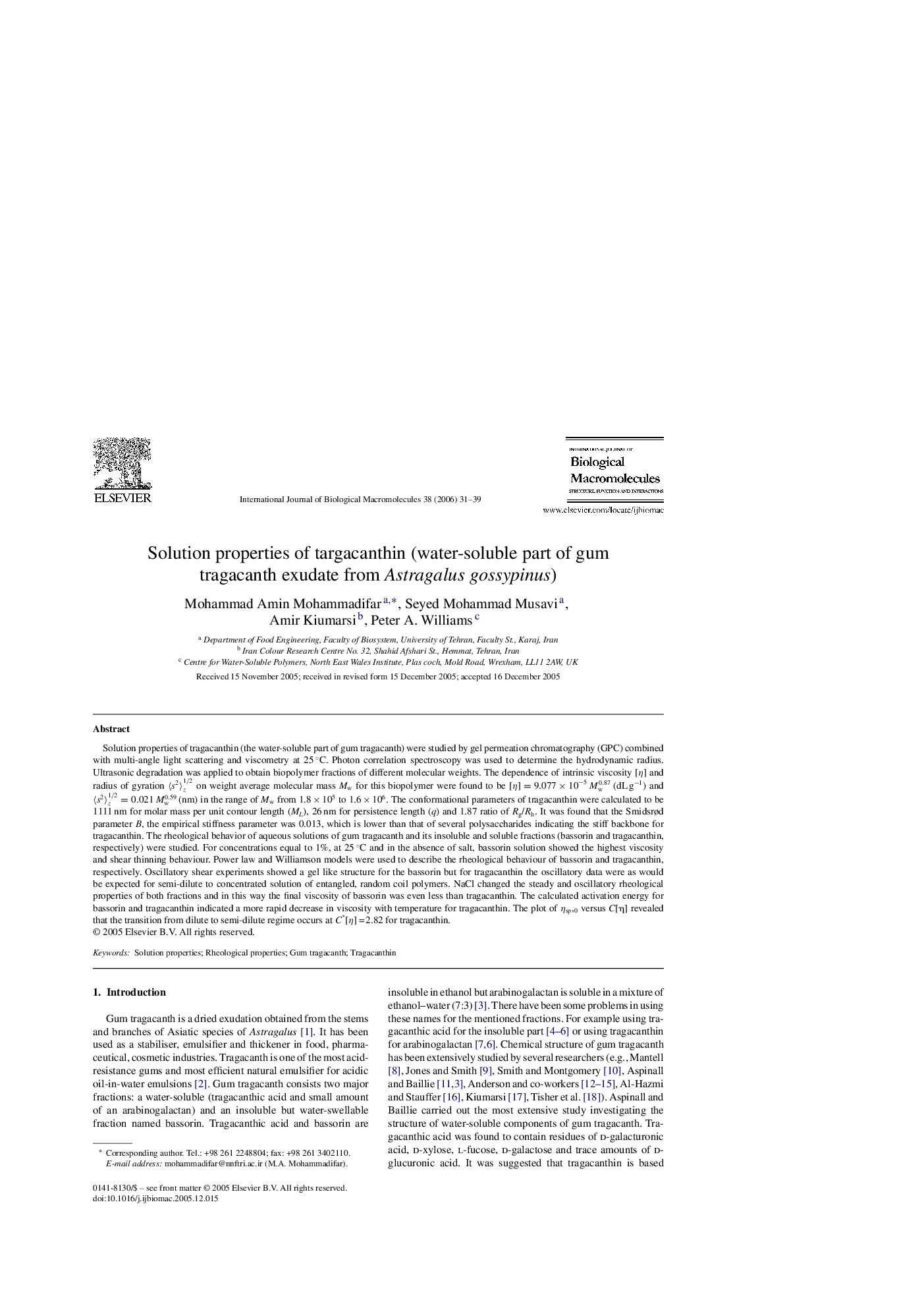| کد مقاله | کد نشریه | سال انتشار | مقاله انگلیسی | نسخه تمام متن |
|---|---|---|---|---|
| 1988157 | 1540332 | 2006 | 9 صفحه PDF | دانلود رایگان |

Solution properties of tragacanthin (the water-soluble part of gum tragacanth) were studied by gel permeation chromatography (GPC) combined with multi-angle light scattering and viscometry at 25 °C. Photon correlation spectroscopy was used to determine the hydrodynamic radius. Ultrasonic degradation was applied to obtain biopolymer fractions of different molecular weights. The dependence of intrinsic viscosity [η ] and radius of gyration 〈s2〉z1/2 on weight average molecular mass Mw for this biopolymer were found to be [η]=9.077×10−5 Mw0.87(dL g−1) and 〈s2〉z1/2=0.021 Mw0.59 (nm) in the range of Mw from 1.8 × 105 to 1.6 × 106. The conformational parameters of tragacanthin were calculated to be 1111 nm for molar mass per unit contour length (ML), 26 nm for persistence length (q) and 1.87 ratio of Rg/Rh. It was found that the Smidsrød parameter B, the empirical stiffness parameter was 0.013, which is lower than that of several polysaccharides indicating the stiff backbone for tragacanthin. The rheological behavior of aqueous solutions of gum tragacanth and its insoluble and soluble fractions (bassorin and tragacanthin, respectively) were studied. For concentrations equal to 1%, at 25 °C and in the absence of salt, bassorin solution showed the highest viscosity and shear thinning behaviour. Power law and Williamson models were used to describe the rheological behaviour of bassorin and tragacanthin, respectively. Oscillatory shear experiments showed a gel like structure for the bassorin but for tragacanthin the oscillatory data were as would be expected for semi-dilute to concentrated solution of entangled, random coil polymers. NaCl changed the steady and oscillatory rheological properties of both fractions and in this way the final viscosity of bassorin was even less than tragacanthin. The calculated activation energy for bassorin and tragacanthin indicated a more rapid decrease in viscosity with temperature for tragacanthin. The plot of ηsp,0 versus C[η] revealed that the transition from dilute to semi-dilute regime occurs at C*[η] = 2.82 for tragacanthin.
Journal: International Journal of Biological Macromolecules - Volume 38, Issue 1, 28 February 2006, Pages 31–39